Intransitive Verb: Definition, Meaning, and Examples

Action verbs can be divided into two categories: transitive (verbs that take a direct object) and intransitive (verbs that don’t take a direct object).
You’re probably very familiar with intransitive verbs, even if you don’t know it!
Today, we’re diving into everything you need to know about intransitive verbs, including a bunch of examples. You’ll be an expert in no time.
What Are Intransitive Verbs?
An intransitive verb is a type of verb that does not take a direct object. In other words, it does not need a noun to receive the action.
We need to understand what a direct object is to understand intransitive and transitive verbs.
A direct object is a noun or noun phrase that is the recipient of an action in a sentence.
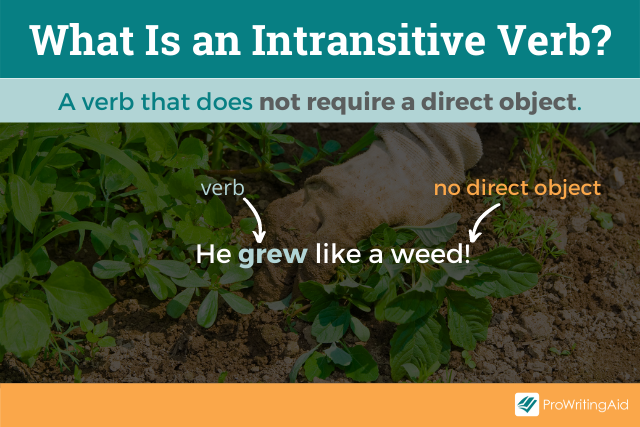
What Is the Difference Between Transitive and Intransitive Verbs?
The difference between transitive and intransitive verbs lies in the necessity of a direct object. The intransitive verb does not take a direct object, whereas the transitive verb does take a direct object.
What does this mean? In order for a transitive verb to make sense, it must be followed by a direct object. This object receives the action of the transitive verb.
Let’s look at the verb “bring.” If you write, “I bring,” you have a complete sentence. There is a subject and a verb. However, it doesn’t make sense. I bring what?
Bring is a transitive verb because it needs an object to receive the action in order to make sense.
“I bring cookies” makes the sentence grammatically correct. “Cookies” is the direct object. It’s what I bring.
An intransitive verb does not need an object to receive the action. The prefix “in” means without or not, so you can remember that an intransitive verb is without a direct object.
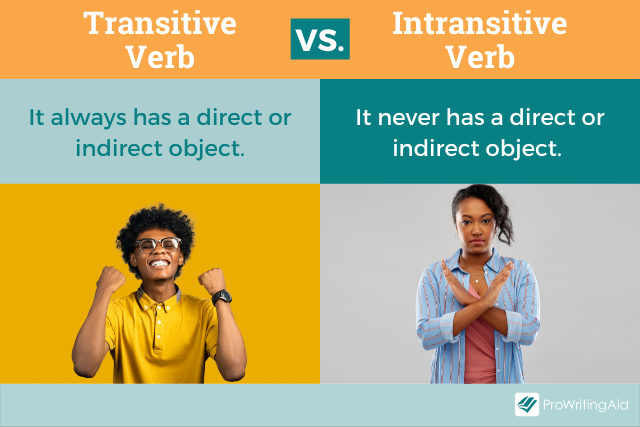
How Do You Identify the Intransitive Verb in a Sentence?
Identifying the intransitive verb in a sentence requires you to look for what isn’t there.
First, find the action verb in the sentence. It can be helpful to circle or highlight the verb when you’re getting used to identifying sentence components.
Then look at what comes after the verb. Is there a noun close by that is receiving the action?
That noun is the direct object. It usually immediately follows the verb, although it can have a determiner or adjective in front.
If there’s no direct object, the verb you found is an intransitive verb.
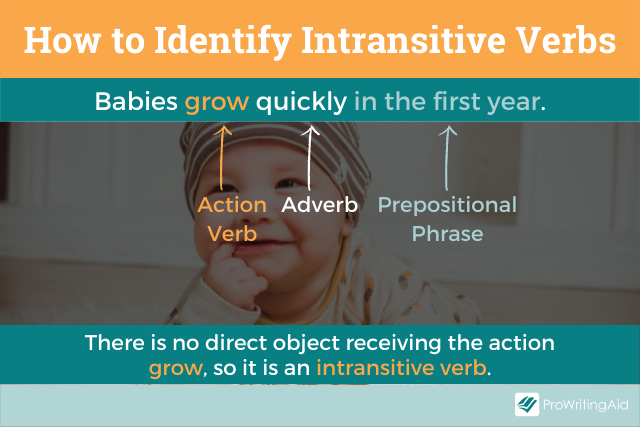
Let’s look at two examples to determine if there’s an intransitive verb.
Babies grow quickly in the first year.
He threw a toy at my head.
In the first sentence, the action verb is “grow.” Following the verb, we have an adverb (quickly) and then a prepositional phrase (in the first year).
There is no direct object receiving the action “grow.” Therefore, “grow” is an intransitive verb.
In the second sentence, the action verb is “throw.” Immediately following the verb, is “a toy.” Toy is a noun, and a is the determiner.
The toy is being thrown. It is receiving the action. Because it’s receiving action, “toy” is the direct object, which makes “threw” a transitive verb.
Easy enough, right? Remember, intransitive means no direct object. Usually, your sentences will sound wrong if you place an object next to an intransitive verb.
What Are Some Examples of Intransitive Verbs?
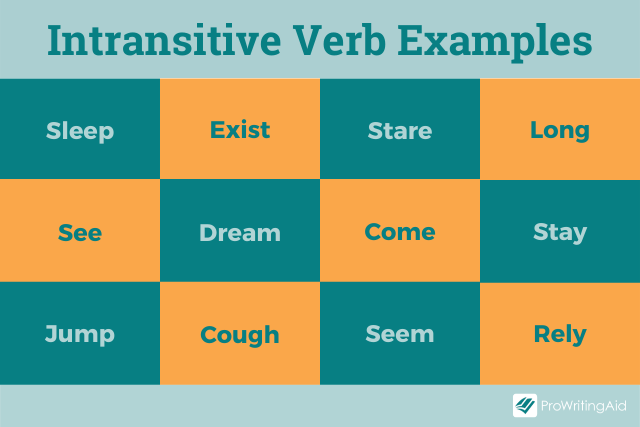
There are many intransitive verbs in English. Here are some of them.
| Sleep | Stay | Jump |
|---|---|---|
| Exist | Go | See |
| Stare | Seem | Dream |
| Long | Cough | Come |
None of these verbs require a direct object. But you might think of instances where some of these verbs can have an object after them.
What’s the deal with these verbs? That leads us to our next section.
Can a Verb Be Both Transitive and Intransitive?
Some verbs can be both transitive and intransitive. It just depends on the specific situation.
You can determine whether a verb is functioning as transitive or intransitive based on whether or not there is a direct object.
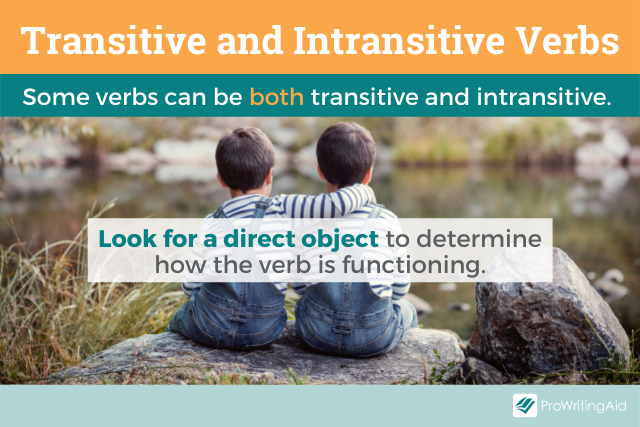
Let’s take a look at some examples of verbs that can function as both. First, we’ll return to the verb grow that we looked at previously.
The tree grows slowly.
He grows flowers every spring.
In the first sentence, grow is intransitive because slowly is an adverb, not a noun. In the second sentence, grow is transitive. The direct object is the noun “flowers.”
I soaked in the bathtub for an hour.
You can soak the dishes to get the grime off of them.
Soaked is followed by a prepositional phrase in the first sentence, but in the second sentence, the direct object is “dishes.”
My sister sings terribly, but my brother is an excellent singer.
We sing Christmas songs every December.
Terribly is an adverb, which means sing is intransitive in the first sentence. The direct object of sing in the second sentence is “Christmas songs.”
He can play in the backyard after lunch.
We played video games all night long.
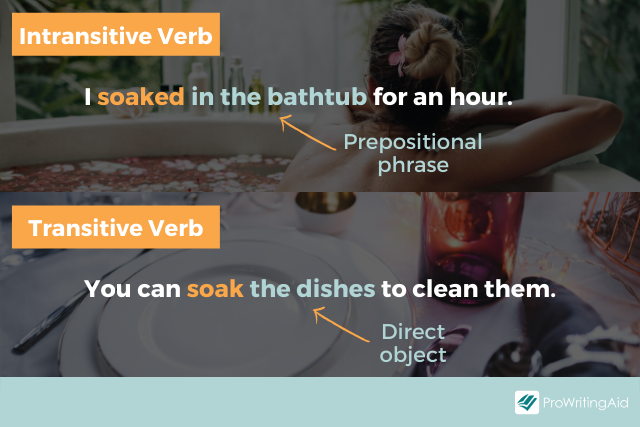
The first sentence has play as an intransitive verb because it’s followed by a prepositional phrase (“in the backyard”).
But the second sentence has play as a transitive verb because “video games” is a direct object.
Here are some more verbs that can be both transitive and intransitive:
- Run
- Continue
- Write
- Return
- Move
- Attack
- Remember
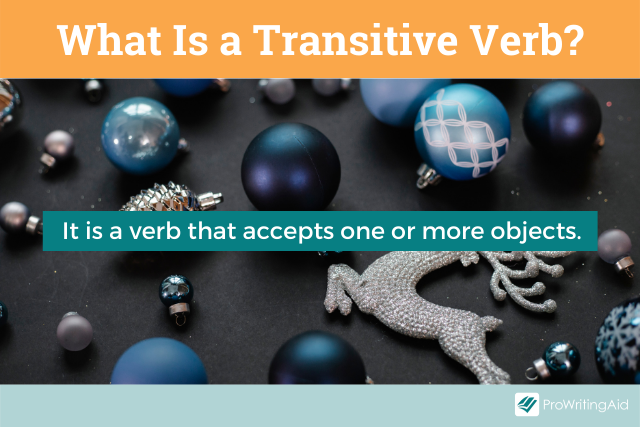
These are just a few examples out of many. Can you think of any other words that are both transitive and intransitive verbs?
What Are Some Sentences That Use Intransitive Verbs?
We’ve seen several examples of intransitive verbs, but what do they look like in a sentence? Let’s check out some sentences that use intransitive verbs.
Remember, they might have an adverb or a preposition after them, but they will not have a direct object.
- There’s no need to panic.
- We just wandered around the park after dinner.
- Have you ever floated in a sensory deprivation chamber?
- My parents don’t understand what I’m going through.
- Let’s go to Paris for our anniversary.
- He screamed loudly when he saw the spider.
- The sun shined brightly over the ocean.
- The whole structure will collapse without a firm foundation.
- The horse galloped swiftly away.
- She’s never voted in an election before.
- Will you wait for me?
As you can see in these examples, intransitive verbs might have nothing after them, or they might have a preposition or an adverb. But none of them have a direct object.
You can practice identifying intransitive verbs in your writing by sentence diagramming or color-coding the different parts of a sentence.
This can help you learn how to find prepositional phrases, direct and indirect objects, and adverbs, which in turn will help you determine whether you’re using an intransitive verb.
Final Thoughts on the Intransitive Verb
Now that you know the rules behind intransitive verbs, you can put it to practice in your own writing.
If you’ve got questions, feel free to drop them in the comments section and we’ll be sure to help you out.